When you start with charcuterie as a beginner it can seem overwhelming with all the variations out there, in our very online connected world (low information diet is the key I reckon).
The definition of charcuterie encompasses a lot more than dry-cured meats for most people, which I guess now becomes whatever you want to highlight your charcuterie board (but dry-cured meats are still the kingpin).
But here at eat cured meat, it’s all about… curing meat! So I’m going to try and come up with suggestions for a beginner so that you can create some of your charcuterie (a loose definition used).
I have been lucky enough to learn about curing over the last 20 years or so, and make all sorts of dry-cured and smoked things at home. I’ve had a stint looking into professional kitchens, and traditional and modern butcheries across the world. This has opened my eyes to two different ways that the charcuterier can approach the subject.
To start with here is a list of what I think of the easiest things you can make as a beginner in charcuterie.
Easy Charcuterie for Beginners Ideas
- Dry Curing Meat in Your Kitchen Fridge
- Gravlax – Salt Cured Salmon
- Hot Smoker for Smoking Fish or Sausages
- Pates & Rillettes
- Pesto or Olive Tapenades
I’ll have to cover off, doing some hot smoking since you can apply this to so many different foods.
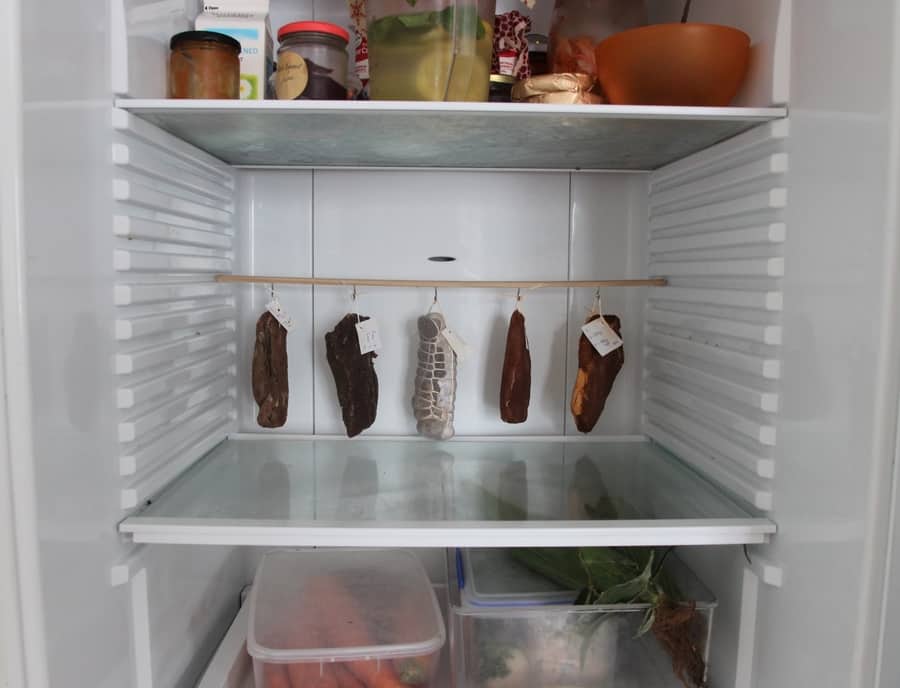
This easiest way to think of hot smoking, it’s cooking things in an oven with some smoke for flavor!
I like to break hot smoking into direct (portable smoker or wok smoking) or indirect smoking (BBQ low& slow)
The principles are always the same and you can use either method, but the direct method you probably already have the stuff in the kitchen for, indirect smoking will probably mean a new smoking toy (some of the devices can be super simple too, remember it’s just oven cooking something with some smoke).
I tested a method of doing some dry-cured meats in a normal kitchen fridge which generally has low humidity and not the ideal temperature but you can play around with small chunks of meat and flavor. If you use small pieces of meat, then you can reach the targeted weight loss level (35% loss) which will mean the project is complete, slice thinly and enjoy!
Dry Curing in Your Fridge or Cellar
To begin with, you just need salt and good quality meat, like beef (I wrote about charcuterie that is not pork here), venison, or another type of red meat.
1 week to cure, and 2-3 weeks to dry in you’re regular kitchen fridge or cellar.
If you want a bit of a rundown on trying to cure meat at home. Here is the full process, have a look at the article I wrote here.
Or if you want to have a look at a recipe and guide to do some dry curing in your regular kitchen fridge with no modification, I have a popular post worth checking out here.
Gravlax – Salt Cured Salmon
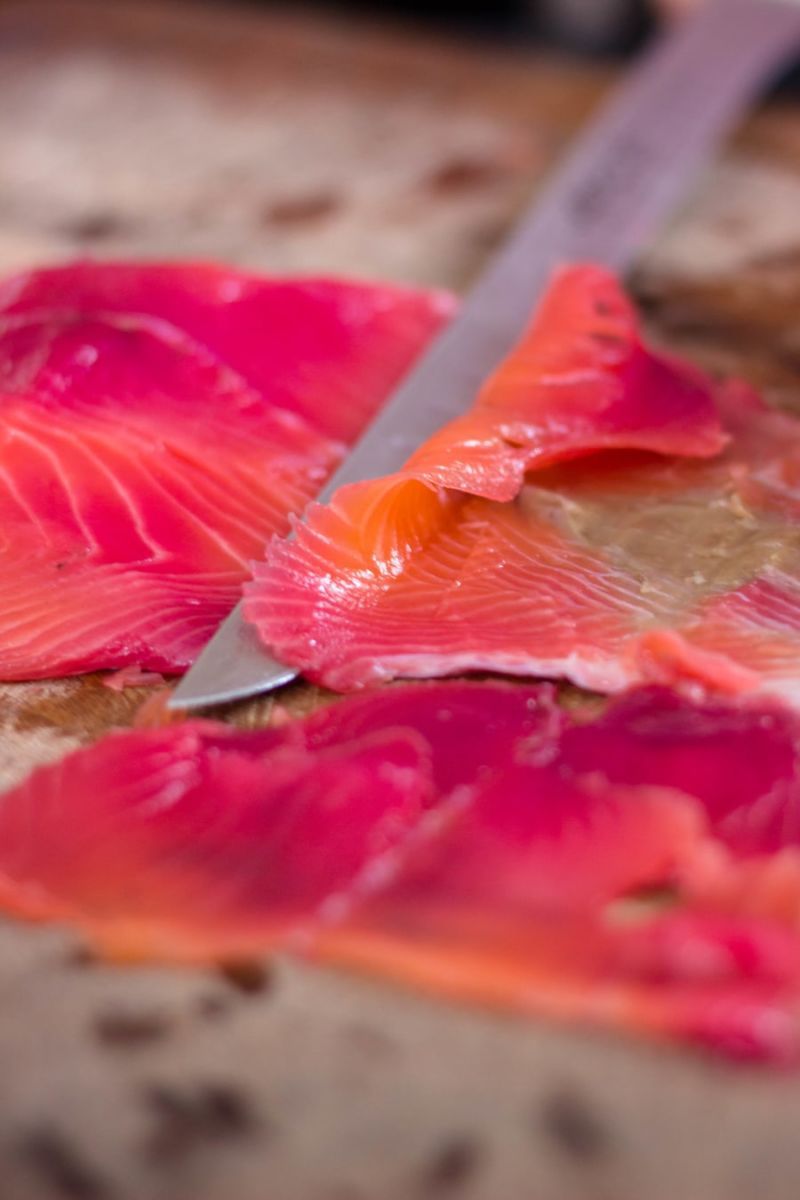
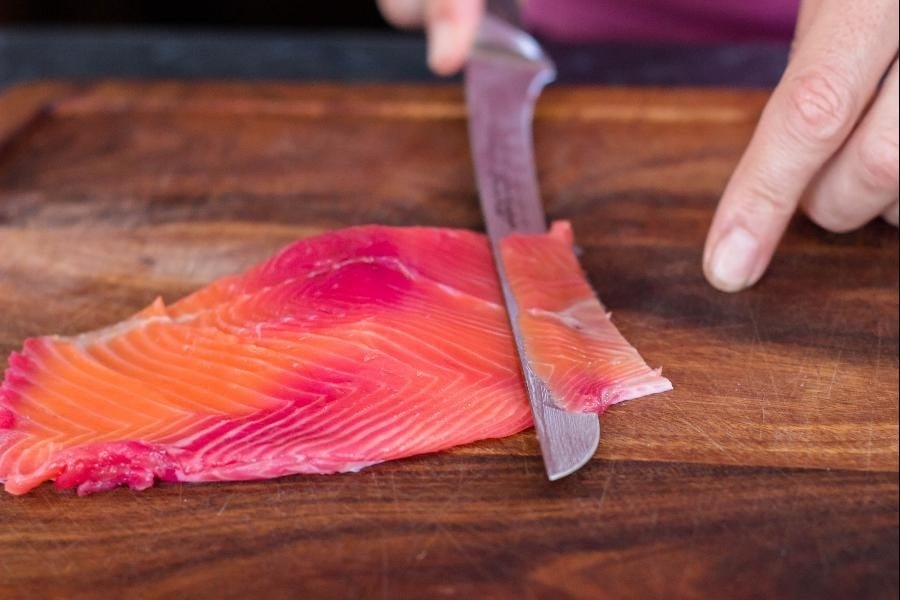

Here is one of my favorite recipes for salt-cured salmon, it’s easy
Cover with sea salt for 12-18 hours. Sprinkle liberally on top and bottom, a bit less around the tail (because it’s thinner).
Wrap & Cover refrigerate for 24 hours
Unwrapped, thinly sliced (if too salty soak in fresh water for 20 minutes and try again.
Remove bones with tweezers if necessary (don’t want these in when slicing)
Will last about 7-10 days in the fridge.
I used grated beetroot for one side of the fillet and orange and lemon zest for the other.
Hot Smoker for Smoking Fish or Sausages
This is an extension of the charcuterie category, but you really can do a lot with a smoker with indirect hot smoking. There are 3 I would suggest for incredibly delicious and beginner-friendly smoked charcuterie, whether it’s delicious meats or even smoked vegetables.
Portable smoker’s – Direct Heat Smokers
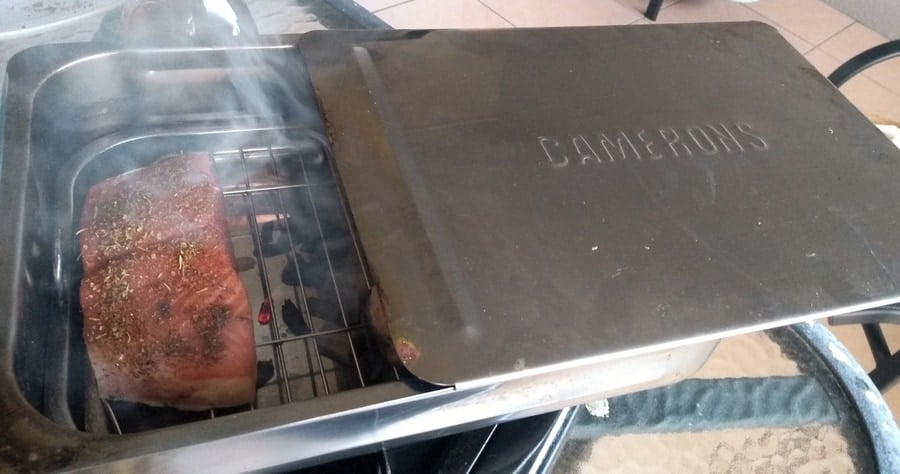
Easy and Simple to operate.
You do have to keep an eye on it, but if you want to smoke a fillet of salmon or just some sausage with direct heat smoking – this is the business. Fresh Sausages smoked instead of cooked on a grill, is a great way to get into this style.
You can use a portable smoker on a normal propane grill or any outdoor heat source.
The design is very simple, you can cook and smoke things like fillets of fish, hot smoked trout, or even some good old sausages. It very quickly gives a whole other flavor angle.

Portable smokers can be used for camping or fishing trips too, there is nothing like a bit of smoking goodness when you’re out on a trip. I’m a little bit surprised why these are not more popular since they are set up easily and work very well.
The biggest thing I learned with a portable smoker was tha, less is more when it comes to the amount of smoking would you use.
Whether it’s sawdust, woodchips, or wood pellets – half a handful goes a long way since this device doesn’t have an exhaust or chimney, so food gets cooked and smoked with direct heat underneath, the wood sits on the bottom and a mesh rack separates the wood from the food inside.
You can also be quite cheeky and put in a temperature probe to know exactly what’s going on inside the little portable smoker chamber.
I’ve done everything from wild turkey breasts, various types of fish fille,ts and some mouthwatering cajun spiced salmon (family recipe).
(Mum even has one on her porch in the apartment. She uses one of those little portable camping stoves for the heat).
Going slow and keeping the temperature low whilst still cooking, and getting some wood smoking it’s pretty straightforward after that.
Check out a couple of portable smokers I recommend here.
Electric Smokers for Charcuterie
The above was direct heat smoking, now onto oven-style indirect smoking.
If you want to make delicious pastrami, ham, and smoked turkey breasts – this is the way.
The two easiest types of smokers available are electric smokers and pellet grill smokers. Since both of these have a thermostat controtheythe basically are like an outdoor oven with woodfired flavor added.
Electric smokers are dess of an investment, (around $200-400 for something decent), but are also a much more basic type of smoker as well.
But when you can easily smoke your pastrami, using an electric smoker to dlow-temperatureture smoked salmon is so easy. A mighty fine addition to any charcuterie platter or a complete meal can be had.
How an Electric smoker works, is it heats up indirectly wita external access to put woodchipd so you can keep the smoke flavor happening.
When you use subtle sweet woods like apple or peach (most fruitwoods), which you can easily buy now in wood pellet form. The subtle sweet nots, add another complexity of flavor and it’s surprisingly easy to do.
For easy meats to smoke, I wrote a guide with some know-how here.
If you know how to operate in the oven, then you know how to operate an electric smoker.
You can make things like hot smoked bacon or your own hot smoked ham in an electric smoker.
Electric smokers are excellent for the beginner, and are worth looking into – I wrote a bit more about one of my favorite electric smokers here.
Pellet Grill Smokers for Charcuterie
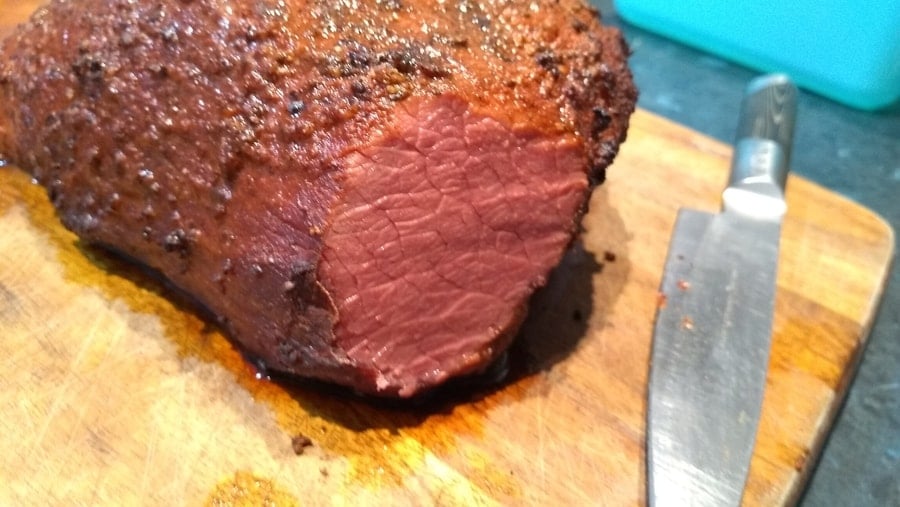
Similar to an electric smoker, but a lot more versatile, a pellet grill smoker is like a wood-fired smoker at there best. The key thing I love about them, they are convenient, compared to any other smoker.
I mentioned it’s got the thermostat control, and you can even get some with complete Wi-Fi control either around the home or when you’re out and about.
They need a power supply and are an outdoor grill also.
Pellet grill smokers are like a 6 or 7 in 1 smoking and cooking machine.
All the oven aspects, plus grill plus low and low hot smoking abilities.
Check out some more I wrote about pellet grills here. They are much more of an investment than an electric smoker, but they do a lot more too – set and forget!
What will an Electric Smoker or Pellet Grill Make?
Sliced Goodness – Hams, Hot Smoked Bacon, Pastrami
Hot smoked bacon has been cured, cooked, and smoked at low temperature, it’s perfect to be done on a pellet grill or electric smoker.
Hot smoked hams, there are so many different styles that you can do as well.
I like to take a nice piece of pork loin a small amount of fat around the outside, brined and smoke this and it makes a perfect addition to any platter or as a starter.
There are so many variations of pastrami, but the base of most of it is that you brine or pickle the chunk of meat at the start.
Then you low-temperature smoke it until soft moist & tender covered with a delicious spicy exterior.
I’ve had quite a lot of success as well with using lean wild cuts of meat to make a wild type of pastrami. You probably know most of the time it’s beef (I wrote a full article about preserving beef in another article) since Jewish tradition is to not eat pork.
Snacks – Smoked Nuts & Seeds

It’s something that’s overlooked quite often but smoking all types of nuts and seeds creates quite a lot of complexity of flavor, and you can mix through many different types of spices or dried herbs.
Some nuts when you smoke them at a certain temperature then natural oils come out which allows you to stick the spices or herbs, and mix.
Smoked Turkey or Chicken
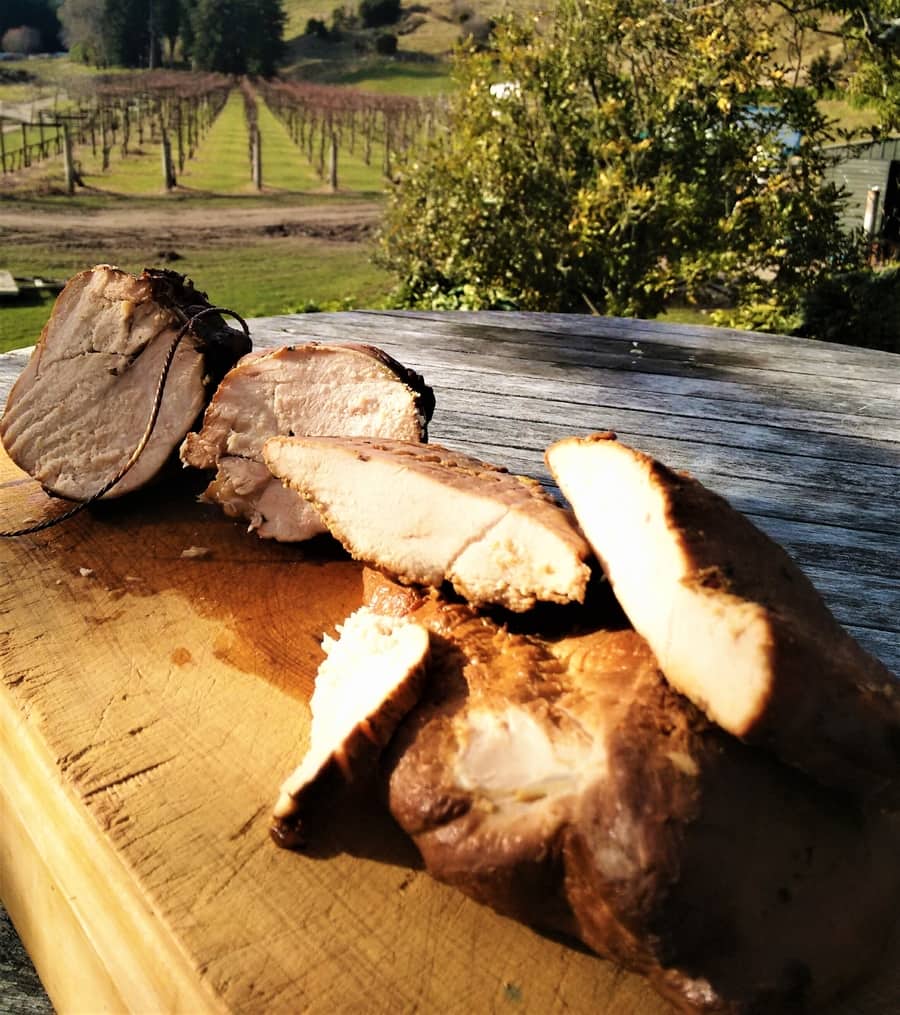
Boneless cuts of poultry which have been cured and then smoked slowly on a pellet grill (or electric smoker), are another beautiful addition to a charcuterie board.
I like to use an equilibrium brining method, which makes sure you get the perfect level of saltiness that you desire, amazing for poultry smoking.
If you want to read a bit more about an accurate way of drying or curing, I wrote a post about equilibrium dry salt curing and brining with some useful tools, check it out here.
Pates & Rillettes
Pates are a more classic type of charcuterie, in the strictest of French interpretations. The richness of good liver coming through and pates is a great addition to any meal.
Whether you’re looking for the richness from the liver or creamy flavors from dairy like cream and butter. Here are a few of my favorite pate recipes, but first my mum’s (yes my mum) recipe.
Mum’s Supper Pate Recipe
- 250g Chicken Livers
- 1 small onion
- 1 clove of garlic
- 125g butter
- salt, pepper, brandy & thyme
Trim chicken livers, chop onions and garlic finely
Take most of the butter (leaving a bit for a sealer at the end)
Soften it in a pan, then sauté onion and garlic and it’s for a few minutes.
Add chicken livers. Sauté until livers are firm to touch. Let everything cool, and pass it through mincer or blender. Add any butter remaining in the pan.
Season with salt and pepper, plenty of chopped fresh or tried time, and 1 tablespoon of brandy and mix well.
Spoon pate into an earthenware dish. Melt that saved up a bit of butter and pour on the top as the sealer.
‘Serve at room temperature by candlelight and watch guests patiently’
Pesto or Tapenade
A wonderful addition to a charcuterie platter is to have your own homemade spreads. The classic pesto is a perfect go-to recipe.
But then there are all sorts of variations like sun-dried pesto or using all types of different nuts like Brazilian, hazelnut, or almonds instead of the classic pine nuts as the base.

Tom Mueller
For decades, immersed in studying, working, learning, and teaching the craft of meat curing, sharing the passion and showcasing the world of charcuterie and smoked meat. Read More

The amount of ads ruined your site.
Sorry to hear you say that, Since its free to you, Without them I couldnt run the site with costs. Would you donate money so I cant run the site? If so, maybe that could be the answer. Regards, Tom